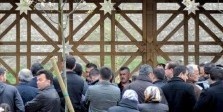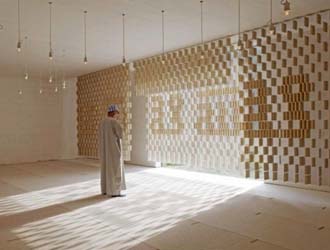The construction of a cemetery apt for Muslim rites meets the requirements of a very considerable minority, enabling many immigrants to bury their dead in the land where they have settled.
[Sarah Mineko Ichioka, former director of The Architecture Foundation (AF) | Duration: 02:07]
TECHNICAL SHEET
Developer: City Council of Altach
Authors: Bernardo Bader Architects with the collaboration of Azra Askamija (Interior Design Prayer Room) and Eva Grabherr (Prozess Work)
Country: Austria
Surface: 8.400 m2
Coste: 2.300.000 €
Project: 2007
Work: 2009
End of work: 2012
DESCRIPTION
The town of Altach is in the federal state of Vorarlberg where, although 78% of the population is registered as Catholic, Austria’s largest concentration of Muslims resides. In recent decades, immigration has multiplied the number of practising Muslims living in the country, which has been significant in Western Europe since 1979 when the Islamic community was acknowledged as a corporation under public law, and the religious freedom of Turkish, Bosnian, Afghan, Kurdish, Chechen, Iranian, Arab or Pakistani Muslims was thus recognised. Nevertheless, Austria only had one Islamic cemetery until 2012. Moreover, such religious requirements as bathing the deceased, burial without a coffin, and collective prayer in the Musallah (prayer hall) require highly specific installations, but the town of Altach was willing to satisfy this need.
In 2004, several communities of Muslim immigrants organised a joint initiative to request a cemetery where they could bury their dead in the land where they have settled. Nine years later, and with support from the local council, the cemetery was opened. It is organised around six spaces with parallel walls which, owing to the road running past the cemetery, are staggered in their layout so that they are all oriented towards Mecca. Five of these spaces are unroofed burial enclosures, while the sixth contains facilities for ablution rites, congregation and prayer. The main entrance façade, which closes off the courtyard and the Musallah, features oak latticework, thus combining the local woodcraft tradition with the abstract geometry of Islamic art.
If the European nature of the cemetery is not evident, neither is its quality as urban public space. Questioning its public condition from the standpoint of secularist requirements would be unjust given the profusion of bell towers in Europe’s squares. The urban-space aspect of the place can be defended on the basis of its capacity of satisfying the demand of a very significant minority in the region. Most difficult of all is to exclude it from the idea of Europe. This is not only because, since its very beginnings, Islam has been clearly present in the history of the continent but also – and especially – because increasing numbers of Europeans of different origins are contributing towards making plurality one of Europe’s greatest riches.
David Bravo, architect




